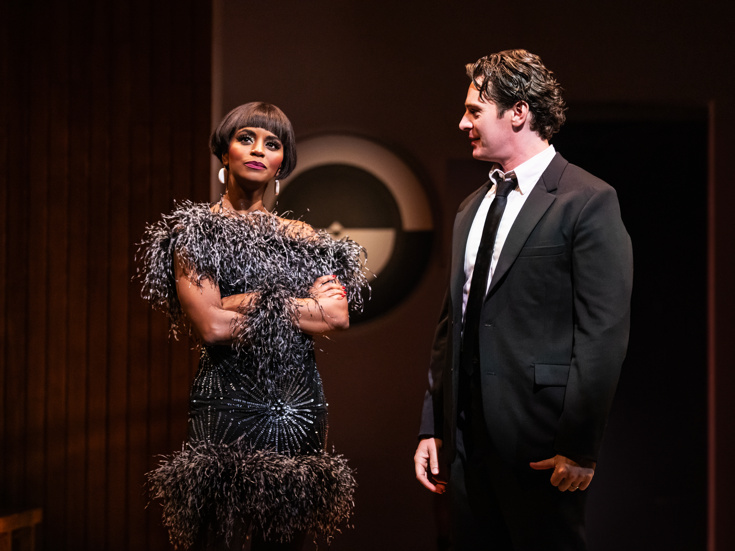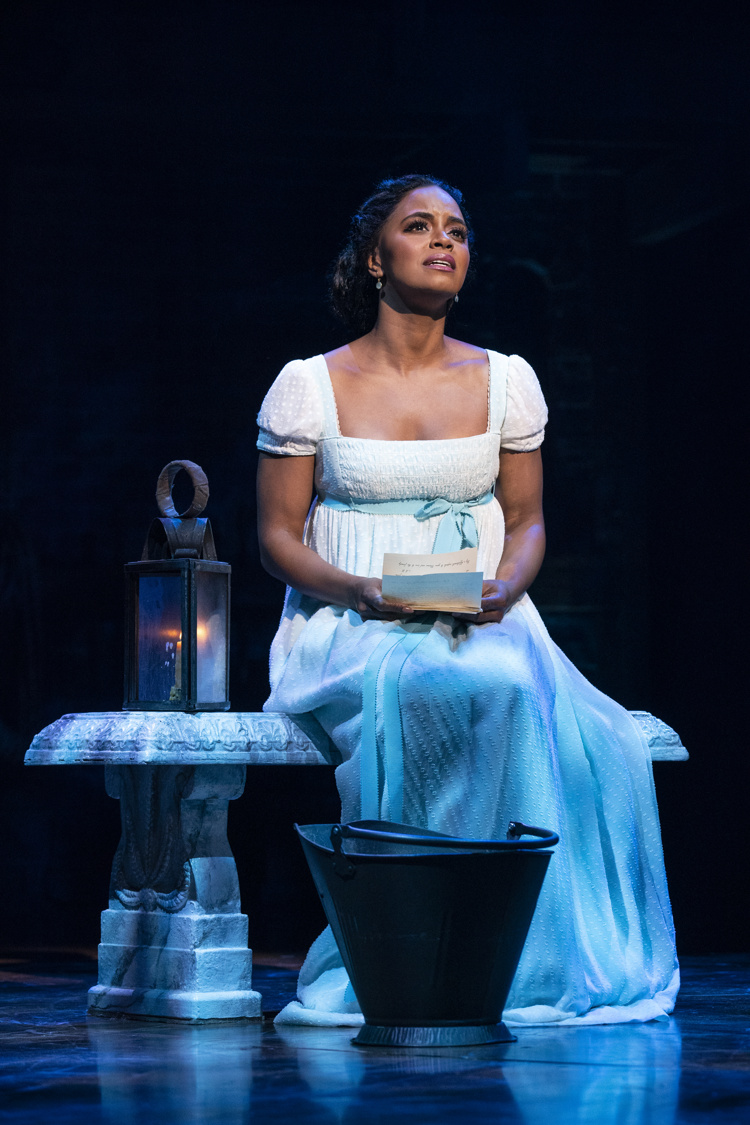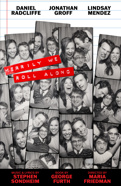Merrily We Roll Along’s Krystal Joy Brown Gives Gussie Carnegie a New Origin Story

(Photo: Matthew Murphy)
Stephen Sondheim’s legacy is in good hands this season. Thomas Kail’s Tony-nominated revival of Sweeney Todd has extended its life with a top-tier pair of new stars; Sondheim’s final musical, Here We Are, is having a celebrated world premiere off-Broadway; and his most famous flop, Merrily We Roll Along, has reached the apex of its lengthy quest for redemption.
Maria Friedman’s lauded Broadway revival, now running at the Hudson Theatre, stars Daniel Radcliffe, Jonathan Groff and Lindsay Mendez as Charley, Frank and Mary—the central trio of pals audiences follow backwards 20 years in time. But key to the musical’s resurrection has been its fresh look at the character Gussie Carnegie—a glittering Broadway actress grasping at relevance through questionable relationship and career moves.
Veteran stage actress Krystal Joy Brown brings the complicated character to life in the revival production—adding undercurrents of fragility to Gussie’s posture as a steely glamourpuss. Accompanied by Broadway Show correspondent Charlie Cooper on her walk to work, Brown contemplates the many parallels between herself and the performer she portrays onstage eight times a week. “There's so many reasons that Gussie and I connect,” Brown says. “As soon as I read the script, I was just like, wow, this woman has been in five Broadway shows, she feels like she's inches away from the top, success isn't happening fast enough. All these different things.”

(Photo: Joan Marcus)
Prior to Merrily, Brown too had been on Broadway five times—appearing in the short-lived musicals Leap of Faith and Big Fish, embodying the legendary Diana Ross as a replacement in Motown the Musical, and enjoying a stint as Eliza in the cast of Hamilton (an ensemble role in the 2009 revival of Hair was her Broadway debut).
It’s an impressive resume speckled with the characteristic fits and starts of a Broadway career. And Merrily, you could say, is giving her a rare open road. As the first Black performer to play Gussie on (or off-) Broadway, she gets to paint the character with colors never seen before. “I started thinking about all the incredible Black women of the fifties, sixties and seventies who were trying to forge their path,” Brown tells Cooper. “I thought of Eartha Kitt and Dorothy Dandridge and Diahann Carroll and Diana Ross—these women who just really beat the odds…I want people to see how complex this character can be and also how in-depth this character can be. Because she goes through 20 years just as much as everybody else does.”
Brown describes this chance to recreate the much-villainized Gussie as both “an honor” and “a big responsibility.” “I think it’s easy for people to look at Black women and be like, ‘you're so strong, so this, you're so that,’” she says. “No, we're very vulnerable, very human and sometimes we have to put on these masks to survive and to be able to function in this society.” Peeling back the layers of that mask, she explains, is what makes Merrily such a powerful exercise in empathy—a chance to ask yourself, “Where's the humanity in this person?”, or, to quote Sondheim’s lyric, “How did it happen?”
Brown, however, wouldn’t want you to think for a second that you can’t embrace nuanced humanity and diva energy at the same time. She proudly shares with Cooper that she served not one but two looks at the musical’s opening-night celebration, an evening commemorating Friedman’s tremendous production, the brilliance of Sondheim and George Furth’s underappreciated work, and her own Broadway milestone. For a moment like that, she says, “Gussie would do nothing less than have a costume change.”

